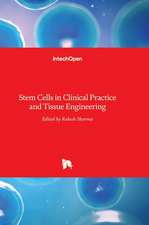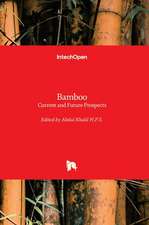Science and Engineering of Chinese Liquor (Baijiu): Microbiology, Chemistry and Process Technology
Editat de Yan Xuen Limba Engleză Hardback – 28 ian 2023
| Toate formatele și edițiile | Preț | Express |
|---|---|---|
| Paperback (1) | 960.30 lei 6-8 săpt. | |
| Springer Nature Singapore – 28 ian 2024 | 960.30 lei 6-8 săpt. | |
| Hardback (1) | 830.77 lei 38-44 zile | |
| Springer Nature Singapore – 28 ian 2023 | 830.77 lei 38-44 zile |
Preț: 830.77 lei
Preț vechi: 1093.12 lei
-24% Nou
Puncte Express: 1246
Preț estimativ în valută:
158.97€ • 166.31$ • 132.06£
158.97€ • 166.31$ • 132.06£
Carte tipărită la comandă
Livrare economică 29 martie-04 aprilie
Preluare comenzi: 021 569.72.76
Specificații
ISBN-13: 9789811921940
ISBN-10: 9811921946
Pagini: 608
Ilustrații: XIX, 608 p. 1 illus.
Dimensiuni: 155 x 235 mm
Greutate: 1.2 kg
Ediția:1st ed. 2023
Editura: Springer Nature Singapore
Colecția Springer
Locul publicării:Singapore, Singapore
ISBN-10: 9811921946
Pagini: 608
Ilustrații: XIX, 608 p. 1 illus.
Dimensiuni: 155 x 235 mm
Greutate: 1.2 kg
Ediția:1st ed. 2023
Editura: Springer Nature Singapore
Colecția Springer
Locul publicării:Singapore, Singapore
Cuprins
Chapter 1. History and Technology of Chinese Liquor.- Chapter 2. Classification of Chinese Baijiu.- Chapter 3.Baijiu-Making Equipments.- Chapter 4. Process Principles and Engineering of Solid-State Fermentation of Chinese Liquor.- Chapter 5. Solid-state Distillation of Chinese Liquor (Baijiu).- Chapter 6. History and advance of flavour research of Baijiu.- Chapter 7. Sensory Properties of Baijiu.- Chapter 8. Chemical Components of Chinese Baijiu.- Chapter 9. Microbial Diversities During Chinese Liquor Fermentations.- Chapter 10. Composition and Succession of the Microbiota in Light-Aroma Baijiu Production.- Chapter 11. Diversity and Succession of the Microbiota in Sauce-Aroma Baijiu.- Chapter 12. Composition, Succession and Key Species of Microbiota in Strong-Aroma Baijiu Production.- Chapter 13. Functional Microorganisms Associated with Baijiu Fermentation.- Chapter 14. Microbial interaction in Chinese liquor fermentation.- Chapter 15. Regulation of the microbiota in Chinese liquor fermentation process.- Chapter 16. Challenges and Perspectives (Strategies).
Notă biografică
Dr. Yan Xu is Professor and Director of the laboratory of brewing microbiology and applied enzymology (LBMAE), school of biotechnology, Jiangnan University, China. Prof. Xu has been working in the field of indigenous fermented foods for over 30 years, mainly focusing on flavor chemistry and brewing microbiology of Chinese liquor. He published more than 300 articles and reviews in recent 10 years, and some of them are in highly-regarded journals including Biotechnology Advances, Trends in Food Science & Technology, Chemical Engineering Journal, EMBO Journal, Journal of Agricultural and Food Chemistry, Applied and Environmental Microbiology, mSystems and Food Chemistry, etc. He has been serving as the vice president of China Alcoholic Drinks Association for 10 years. He is now the editors-in-chief of Systems Microbiology and Biomanufacturing and editorial board members of Food Bioengineering, Acta microbiologica Sinica and Food and Fermentation Industries, etc. He is the only scholar whowon the second prize of national technological innovation in the field of Baijiu research. Prof. Xu also holds more than 100 authorized invention patents, and won the Silver Medal of National Invention Award and First
Prize of Technological Invention of the Ministry of Education for his innovative contributions in production and research of Baijiu. In 2019, Prof. Xu was selected as the fellow of the Division of Agricultural and Food Chemistry of the American Chemistry Society (ACS).
Textul de pe ultima copertă
This book provides a cutting-edge scientific overview of Chinese liquor, also known as Baijiu. Chinese liquor is one of the world’s most ancient fermented alcoholic beverages. Fermented foods and beverages are consumed worldwide as an indispensable constituent in our daily life. However, most fermented foods rely on traditional techniques with limited known scientific knowledge. These indigenous processes are typically empirical without scientifically-based control and technological insights. The book analyses Chinese liquor processing on the three most important disciplines of fermented foods: process technology/engineering, flavor chemistry, and microbiology. It also addresses the perspectives and future research needs associated with spontaneous fermented foods. This book offers a deep understanding of the science of Chinese liquor production to students, researchers, and related practitioners both in the academic and the industry. It would also benefit many other fields of fermented foods for their optimization, standardization, and modernization.
Caracteristici
Provides a cutting-edge scientific overview of Chinese liquor Offers a deep understanding of the science of Chinese liquor production Analyses the three most important disciplines in Chinese liquor processing















